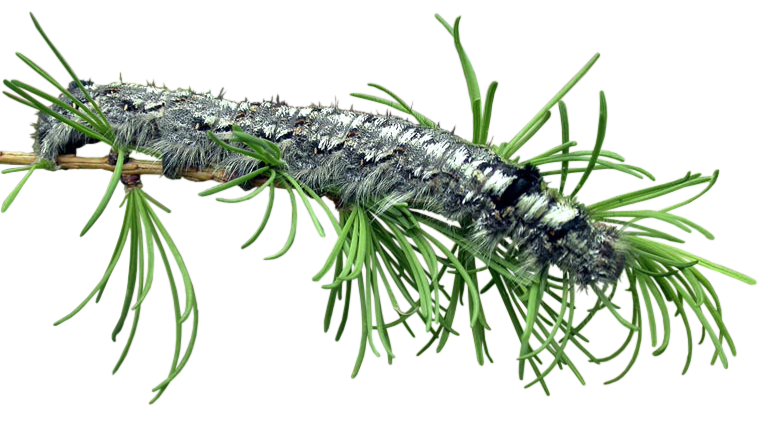Sweltering In Siberia: What's Behind The Heat Wave?
The Siberian town of Verkhoyansk is one of the coldest inhabited places on Earth. The temperature in this city can drop to minus 40 degrees Celsius during an average winter. However, in June 2020, Verkhoyansk reached a temperature of 38 degrees – the highest temperature ever documented north of the Arctic Circle.
Although occasional temperature spikes may emerge anywhere in the world and heat waves are not unusual even in the Arctic area, it is worrying that higher temperatures are now becoming more frequent and more intensive.
So why is Siberia, one of the coldest places on Earth, becoming so warm? And what has Russia been doing about it?
Why is Siberia warming up?
Siberia is warming up as a result of global environmental change, the same reason as the rest of the planet. However, Arctic Russia has been experiencing this trend at a faster pace. From 1969 until 2019, the average global temperature has increased by almost 1 degree. But certain parts of Siberia are now 2 to 4 degrees warmer than they were 50 years ago, which means that they are warming up more than twice as fast as the rest of the planet.
Temperature Changes
(1969-2019)
In 2019-20, Russia saw its hottest winter in the 140-year history of meteorological observations, according to the Hydrometeorological Center of Russia. The Copernicus Climate Change Service reported that May 2020 was the warmest May on record globally, with the most above-average temperatures observed in Siberia. Similar trends continued in certain parts of Siberia in June.
Average Temperature Over Arctic Siberia
(for June relative to 1981-2010)
Because of the unusually mild winter and warm spring, snow melted earlier this year in Siberia. Areas of white snow normally reflect the sun's heat, but if there's a lack of snow and ice, darker areas of land or ocean are exposed and absorb the heat instead. As a result, the remaining snow and ice melt faster and the ground dries out.
Average Snow Cover In Arctic Siberia
(percentage)
Another factor that contributed to the warm weather in Siberia was a large area of high pressure that covered the region. During this phenomenon, high pressure traps air in a certain area and compresses it closer to the ground, which makes the air even warmer. The high pressure also forces clouds away, which makes it easier for sunlight to come through and bring even higher temperatures. And let's not forget that Siberia experiences near-continuous sunlight during summer nights, so there is less chance for air to cool off.
What are some of the consequences of Siberia becoming warmer?
Seasonal wildfires, which usually appear between May and October, are not uncommon in Siberia. In fact, they are part of the local natural cycle. However, the fire season now starts earlier and lasts longer than usual. According to Greenpeace, from January to mid-July of 2020, wildfires in Siberia have already burned about 19 million hectares of forests, fields, and steppes -- an area comparable to the size of Belarus or Kyrgyzstan. These fires impact not only the land but also the environment in general, because they release emissions into the atmosphere. For example, in June 2020, more than 70 megatons of CO₂ were released from fires in the Sakha Republic, which is more than the annual CO₂ emissions of Austria or Romania in 2018.
June CO₂ Wildfire Emissions For The Sakha Republic
(megatons)
About 65 percent of Russia is covered by permafrost – a layer of soil, rock, or sediment that is permanently frozen. If the permafrost thaws, it can release methane – gas created from organic materials that is now sealed in the frozen layer – and potentially speed up global warming. Thawing permafrost can also destabilize roads or buildings. For example, in May 2020 diesel fuel leaked into soil and waterways near Norilsk after a storage tank collapsed, reportedly because of thawing permafrost. There is also a risk of unlocking ancient bacteria and viruses that might be preserved in old permafrost layers. For instance, in 2016 an anthrax outbreak occurred in northern Siberia. It is believed that the disease spread after a skeleton of a reindeer, who got infected decades ago, was exposed.
Permafrost Coverage
Warm weather also contributes to an increased number of certain species, such as Siberian silkworms – insects that feed on trees and can damage large areas of forest. The region of Yakutia has already reported that the number of silkworms is above the critical norm this year.
Silkworm
(Dendrolimus superans sibericus)

What has Russia been doing about it?
Although a majority of scientists agree that man-made emissions contribute to climate change, Russian President Vladimir Putin questions that conclusion. Russia admits there might be consequences to global warming and formally adopted the Paris climate agreement in 2019, but it also claims thawing ice might have its benefits. In January 2020, the country issued its National Adaptation Plan, which listed possible advantages of rising temperatures, such as the opening of new routes in the Arctic Ocean, thus easing access to oil and gas, as well as saving money on heating during winter and more land becoming available for agriculture. On the other hand, Russia's Audit Chamber has warned that Russia won't be able to boost its economy or improve its demographic situation unless it starts solving pressing environmental issues.
In January 2020, the Levada Center asked Russians about the threats currently faced by mankind. Forty-eight percent considered environmental pollution as the most dangerous threat, while 34 percent chose climate change. (Respondents were allowed to choose more than one answer.) This year's heat wave in Siberia is a grim reminder that those worries are real and a warning sign, perhaps, that Russia -- one of the world's biggest polluters -- may need to take action sooner rather than later.